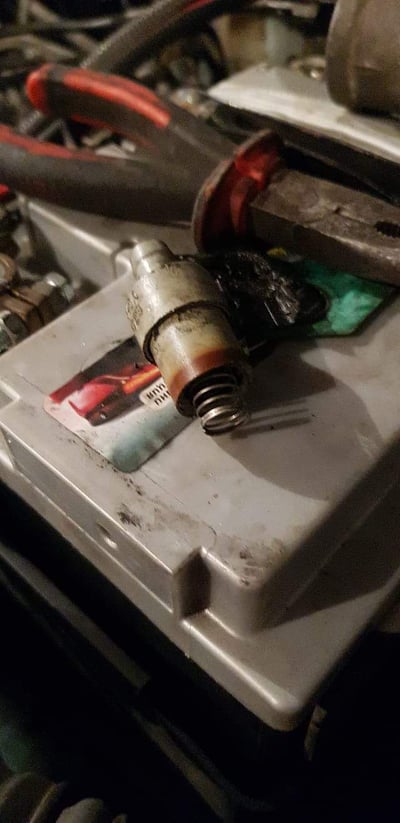Hi all,just thought I'd share my findings with you.
My 1998 Puma had been suffering from rather high oil consumption,around half a litre per 1000mls.The other 3 cars use virtually nothing between annual services,which amounts to around 2000 miles per car.
The car in question had only covered 43,500 at the time and I was convinced that she had endured a life of short,cold start journeys(having lived nearly all her life in Essex under elderly female company)so I suspected bore wear due to Nicasil failure,where condensation due to insufficent engine temperatures over time can lead to sulphuric attack of the plating.
However,the engine has always performed very well,plenty of power and NO SMOKE,and a compression test revealed all was in good order,which flies in the face of my original diagnosis. :?
So on with a routine service and a decision to remove the inlet manifold for further investigation.Lo and behold,we have a manifold that's soaked with oil,indicating that blowby from the crankcase is heading straight into the combustion chambers.
With the manifold out of the way access to the plastic oil seperator box and PCV valve located below was a doddle,so off they came.
The seperator was heavily gunked up with oily crud,however the PCV valve appeared to be fine,giving it a shake it rattled indicating that its inner parts were free and functioning.However having a new replacement to hand it was clear that the old valve was fully open,you could suck air only one way in the new valve,the old allowing air to pass in both directions,thus allowing oil to enter the inlet...although how the engine was smoke free is a mystery!!
Upon cleaning out the oil seperator and inlet manifold then reassembling with the new valve I can confirm,nearly a year and 1500 miles later,that oil consumption is drastically improved,back in line with the others :grin:
A valuable lesson learned....this small, plastic,always overlooked component is worth including in your service schedule.
I have no doubt the old valve was the original 21 year old item,and the rest of the fleet looked to be in the same boat!!
I think replacement every 2-3 years,at a cost of £20 for a genuine Ford part is a small price to pay for a healthy,clean engine. :grin:
Sorry for the long winded post..lol.
My 1998 Puma had been suffering from rather high oil consumption,around half a litre per 1000mls.The other 3 cars use virtually nothing between annual services,which amounts to around 2000 miles per car.
The car in question had only covered 43,500 at the time and I was convinced that she had endured a life of short,cold start journeys(having lived nearly all her life in Essex under elderly female company)so I suspected bore wear due to Nicasil failure,where condensation due to insufficent engine temperatures over time can lead to sulphuric attack of the plating.
However,the engine has always performed very well,plenty of power and NO SMOKE,and a compression test revealed all was in good order,which flies in the face of my original diagnosis. :?
So on with a routine service and a decision to remove the inlet manifold for further investigation.Lo and behold,we have a manifold that's soaked with oil,indicating that blowby from the crankcase is heading straight into the combustion chambers.
With the manifold out of the way access to the plastic oil seperator box and PCV valve located below was a doddle,so off they came.
The seperator was heavily gunked up with oily crud,however the PCV valve appeared to be fine,giving it a shake it rattled indicating that its inner parts were free and functioning.However having a new replacement to hand it was clear that the old valve was fully open,you could suck air only one way in the new valve,the old allowing air to pass in both directions,thus allowing oil to enter the inlet...although how the engine was smoke free is a mystery!!
Upon cleaning out the oil seperator and inlet manifold then reassembling with the new valve I can confirm,nearly a year and 1500 miles later,that oil consumption is drastically improved,back in line with the others :grin:
A valuable lesson learned....this small, plastic,always overlooked component is worth including in your service schedule.
I have no doubt the old valve was the original 21 year old item,and the rest of the fleet looked to be in the same boat!!
I think replacement every 2-3 years,at a cost of £20 for a genuine Ford part is a small price to pay for a healthy,clean engine. :grin:
Sorry for the long winded post..lol.

